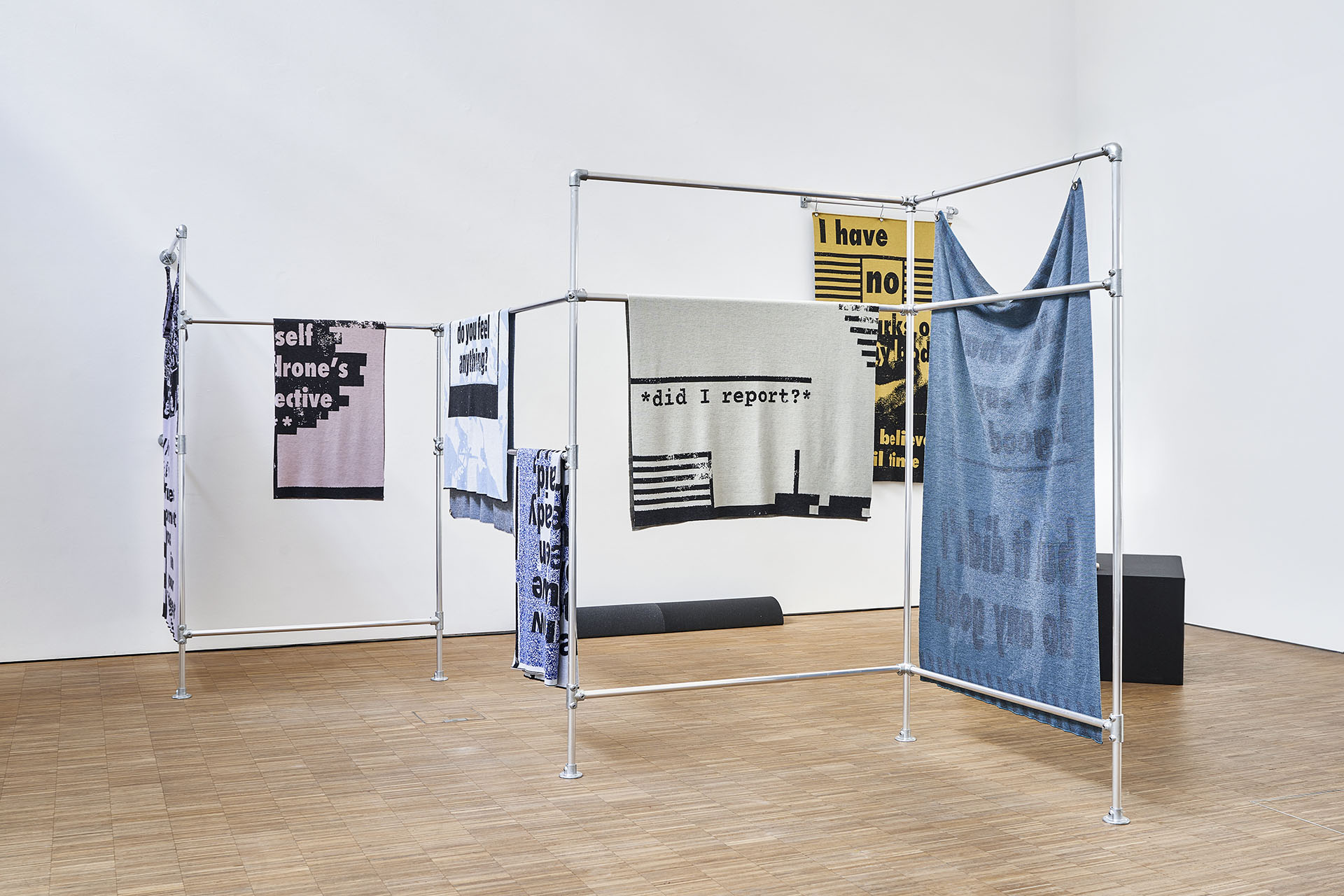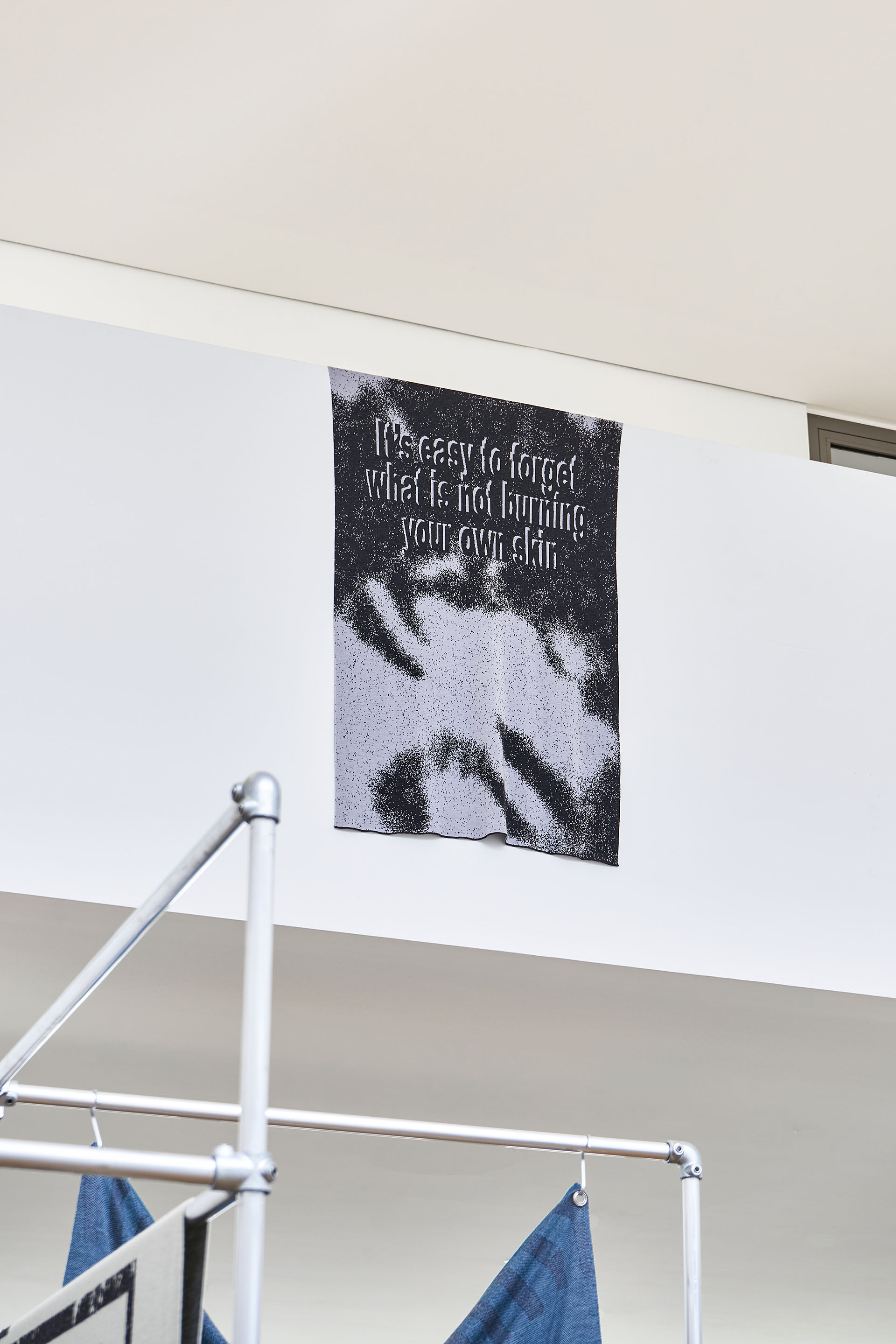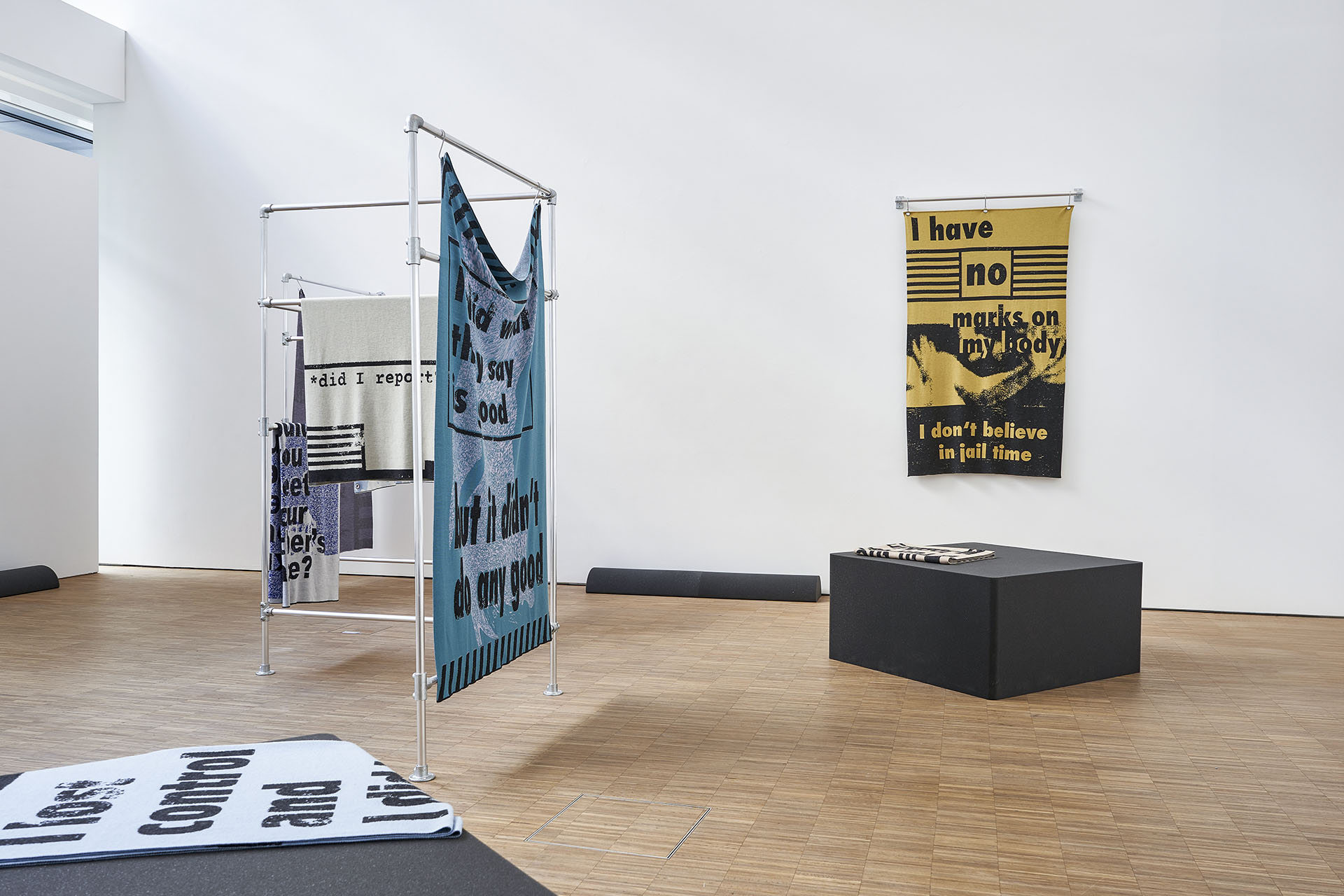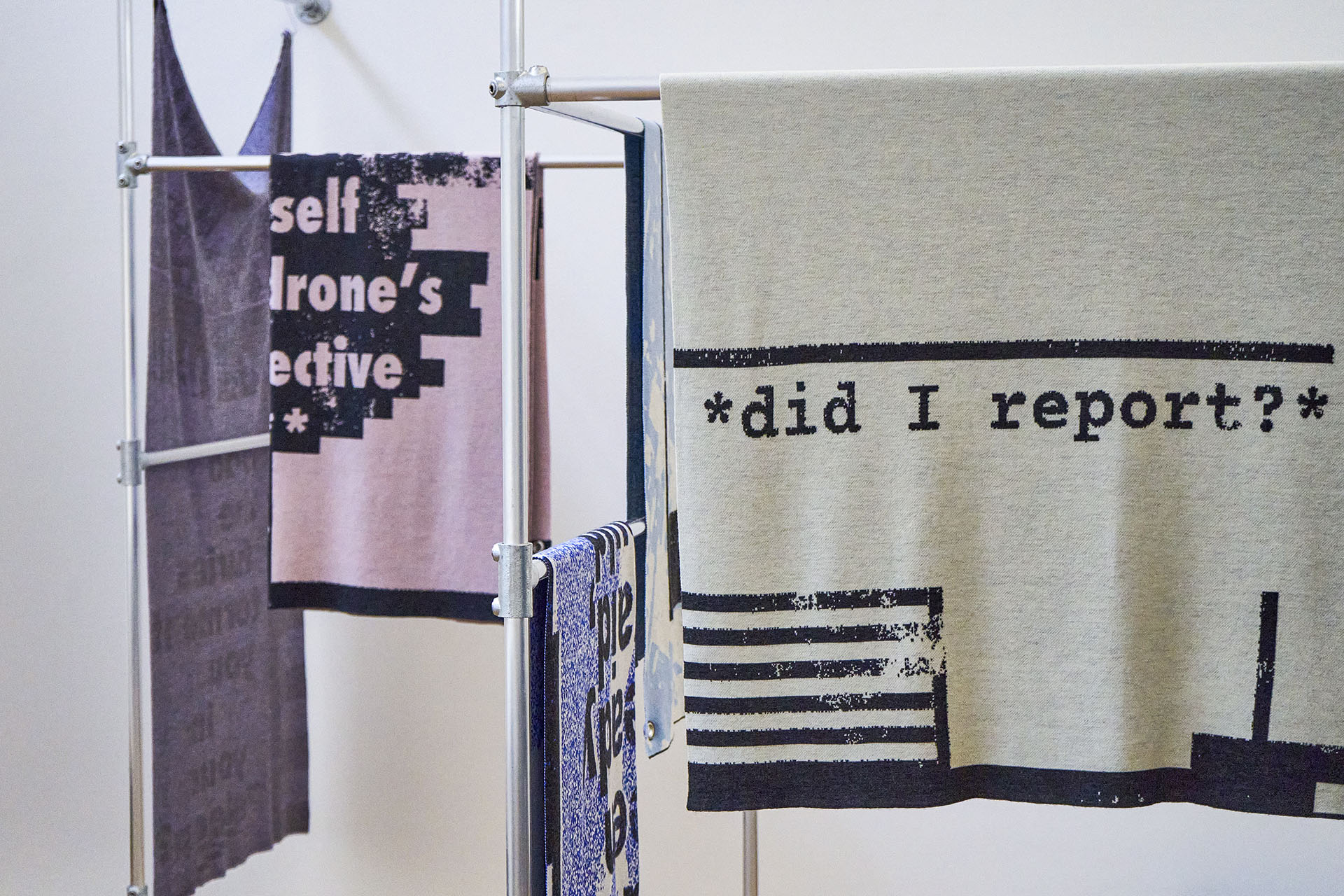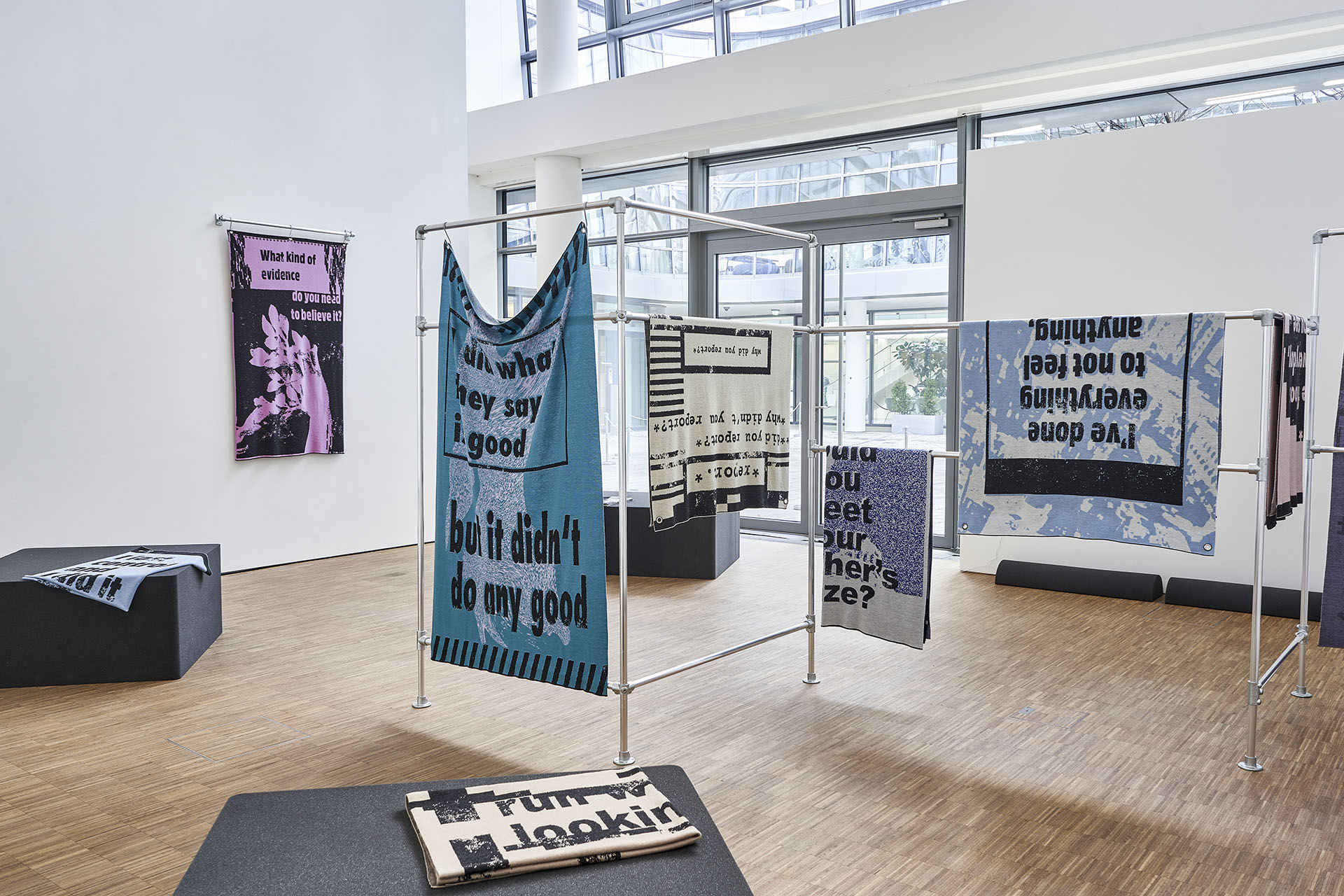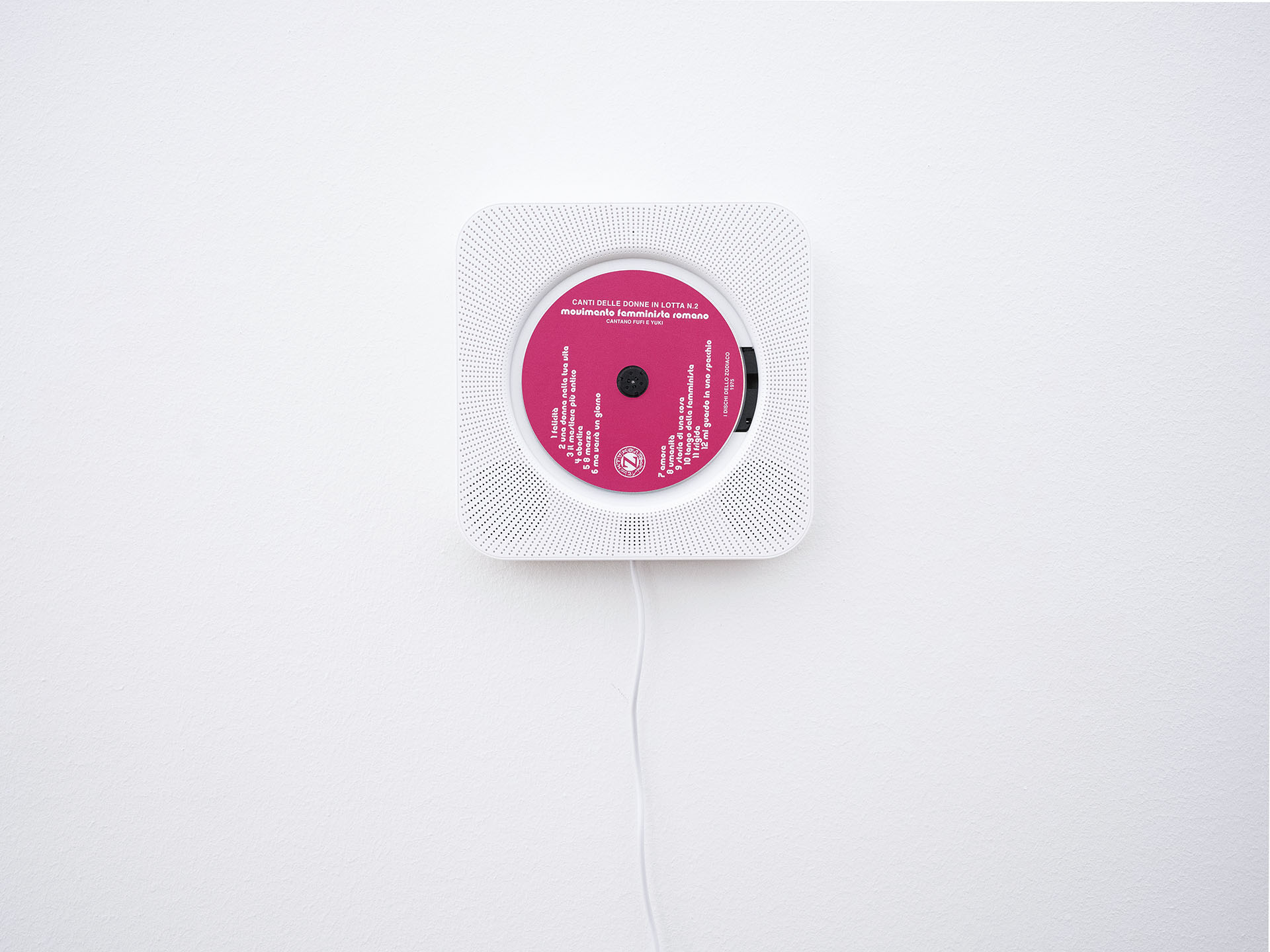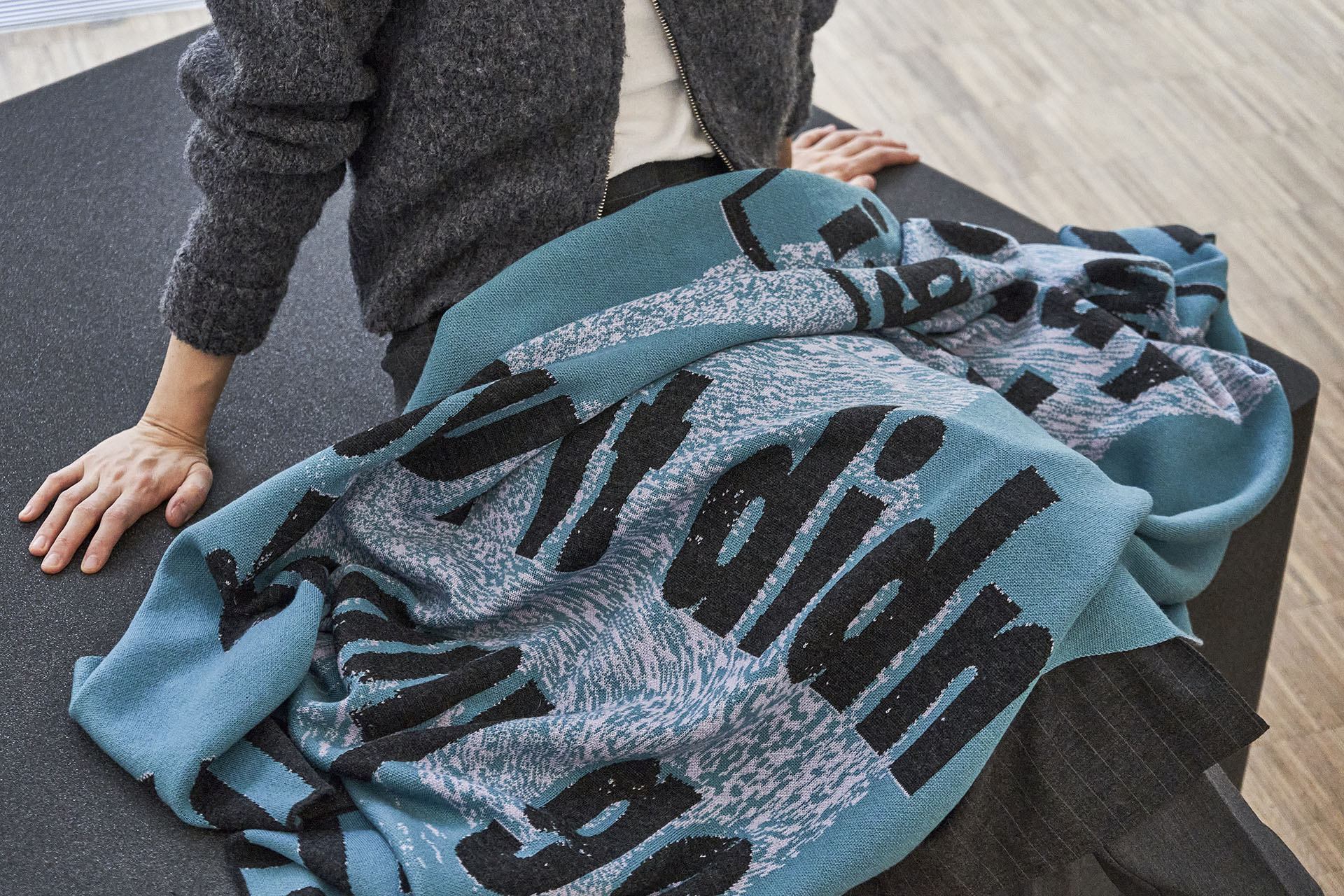Text me when you get home
2024
curated by Benita Meißner at DG Kunstraum Diskurs Gegenwart, Munich
Twelve blankets 100% Merino wool certified as mulesing-free and RWS by ICEA (Ethical and environmental Certification Institute), aluminium structure, seats
Photo credits Younsik Kim
curated by Benita Meißner at DG Kunstraum Diskurs Gegenwart, Munich
Twelve blankets 100% Merino wool certified as mulesing-free and RWS by ICEA (Ethical and environmental Certification Institute), aluminium structure, seats
Photo credits Younsik Kim
a cura di Benita Meißner, DG Kunstraum Diskurs Gegenwart, Monaco di Baviera
Dodici coperte 100% lana Merino certificate come mulesing-free e RWS da ICEA (Istituto di certificazione etica e ambientale), struttura in alluminio, sedute
Crediti Foto: Younsik Kim
Text me when you get home is a sentence we feel the need to write to our loved ones when they come home after a night out.
Text me when you get home is an installation consisting of twelve merino wool blankets arranged on an aluminium frame. Each blanket features phrases related to mental health and intersectional gender-based violence. The graphics are reminiscent of the style of fanzines: amateur magazines that emerged in the mid-1950s in the United States, low-cost and with a limited circulation, created for fans of specific fields such as underground music, independent literature and subcultures. Texts and images were cut out of newspapers and glued onto a sheet of paper, which was then scanned and photocopied countless times until it lost definition. As it was expensive to print in color, people chose to print in black on colored paper to make the messages stand out. The appeal of fanzines lies in their need to spread a message to a wide audience using a cheap medium (the photocopier) that allowed mass production. Just like a flyers or a fanzines, these objects aim to convey messages with immediacy. Although the texts may be unpleasant and uncomfortable, visitors can find temporary shelter in the wool softness, which they can touch and use to cover themselves.
There is a CD player in the space, from which the visitors can listen to the album “Canti delle Donne in Lotta” (Songs of Women in Struggle), an album published in 1975 by the Roman section of the feminist movement, which contains a series of ballads with powerful lyrics written by the women of the movement. Visitors can choose a song of their choice while they unfold, touch, read and perhaps use the blankets to cover themselves while lying on the soft seats specially designed for the exhibition.
Text me when you get home is an installation consisting of twelve merino wool blankets arranged on an aluminium frame. Each blanket features phrases related to mental health and intersectional gender-based violence. The graphics are reminiscent of the style of fanzines: amateur magazines that emerged in the mid-1950s in the United States, low-cost and with a limited circulation, created for fans of specific fields such as underground music, independent literature and subcultures. Texts and images were cut out of newspapers and glued onto a sheet of paper, which was then scanned and photocopied countless times until it lost definition. As it was expensive to print in color, people chose to print in black on colored paper to make the messages stand out. The appeal of fanzines lies in their need to spread a message to a wide audience using a cheap medium (the photocopier) that allowed mass production. Just like a flyers or a fanzines, these objects aim to convey messages with immediacy. Although the texts may be unpleasant and uncomfortable, visitors can find temporary shelter in the wool softness, which they can touch and use to cover themselves.
There is a CD player in the space, from which the visitors can listen to the album “Canti delle Donne in Lotta” (Songs of Women in Struggle), an album published in 1975 by the Roman section of the feminist movement, which contains a series of ballads with powerful lyrics written by the women of the movement. Visitors can choose a song of their choice while they unfold, touch, read and perhaps use the blankets to cover themselves while lying on the soft seats specially designed for the exhibition.
(ITA)Text me when you get home è una frase che sentiamo il bisogno di scrivere ai nostri cari quando tornano a casa dopo una serata fuori.
Text me when you get home è un'installazione composta da dodici coperte di lana merino disposte su una struttura di alluminio, ogni coperta riporta frasi relative alla salute mentale e alla violenza di genere intersezionale. La grafica ricorda lo stile delle fanzine: riviste amatoriali nate a metà degli anni Cinquanta negli Stati Uniti, a basso costo e a tiratura limitata, create per gli appassionati di settori specifici come la musica underground, la letteratura indipendente e le sottoculture. Testi e immagini venivano ritagliati dai giornali e incollati su un foglio di carta, che veniva poi scansionato e fotocopiato innumerevoli volte fino a perdere definizione. Poiché era costoso stampare a colori, si sceglieva di stampare in nero su carta colorata per far risaltare i messaggi. Il fascino delle fanzine risiede nella necessità di diffondere un messaggio a un vasto pubblico utilizzando un mezzo economico (la fotocopiatrice) che consentiva una produzione di massa. Proprio come i volantini o le fanzine, questi oggetti mirano a trasmettere messaggi con immediatezza. Anche se i testi possono risultare sgradevoli e scomodi, i visitatori possono trovare un rifugio temporaneo nella morbidezza della lana, che possono toccare e usare per coprirsi.
Nello spazio è presente un lettore CD, dal quale i visitatori possono ascoltare l'album "Canti delle Donne in Lotta", un album pubblicato nel 1975 dalla sezione romana del movimento femminista, che contiene una serie di ballate con testi potenti scritti dalle donne del movimento. I visitatori possono scegliere una canzone a piacere mentre dispiegano, toccano, leggono e magari usano le coperte per coprirsi mentre si sdraiano sulle morbide poltrone appositamente progettate per la mostra.
Text me when you get home è un'installazione composta da dodici coperte di lana merino disposte su una struttura di alluminio, ogni coperta riporta frasi relative alla salute mentale e alla violenza di genere intersezionale. La grafica ricorda lo stile delle fanzine: riviste amatoriali nate a metà degli anni Cinquanta negli Stati Uniti, a basso costo e a tiratura limitata, create per gli appassionati di settori specifici come la musica underground, la letteratura indipendente e le sottoculture. Testi e immagini venivano ritagliati dai giornali e incollati su un foglio di carta, che veniva poi scansionato e fotocopiato innumerevoli volte fino a perdere definizione. Poiché era costoso stampare a colori, si sceglieva di stampare in nero su carta colorata per far risaltare i messaggi. Il fascino delle fanzine risiede nella necessità di diffondere un messaggio a un vasto pubblico utilizzando un mezzo economico (la fotocopiatrice) che consentiva una produzione di massa. Proprio come i volantini o le fanzine, questi oggetti mirano a trasmettere messaggi con immediatezza. Anche se i testi possono risultare sgradevoli e scomodi, i visitatori possono trovare un rifugio temporaneo nella morbidezza della lana, che possono toccare e usare per coprirsi.
Nello spazio è presente un lettore CD, dal quale i visitatori possono ascoltare l'album "Canti delle Donne in Lotta", un album pubblicato nel 1975 dalla sezione romana del movimento femminista, che contiene una serie di ballate con testi potenti scritti dalle donne del movimento. I visitatori possono scegliere una canzone a piacere mentre dispiegano, toccano, leggono e magari usano le coperte per coprirsi mentre si sdraiano sulle morbide poltrone appositamente progettate per la mostra.
